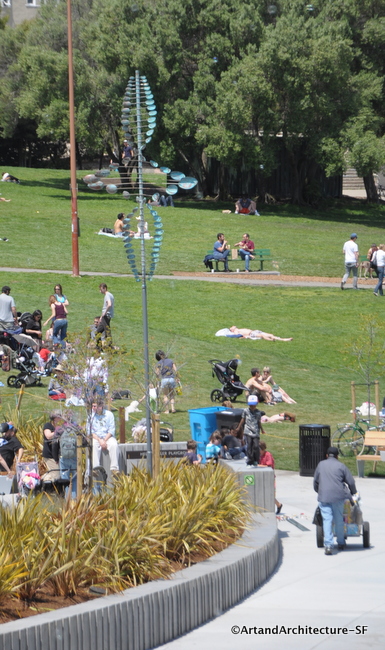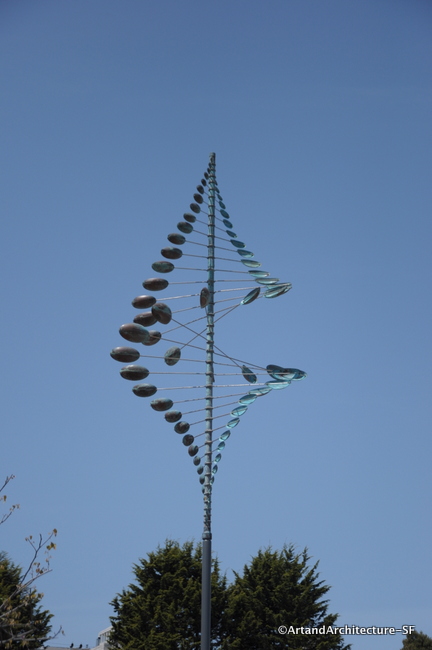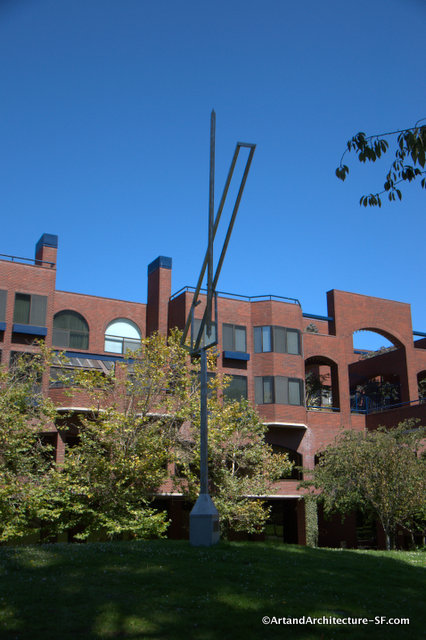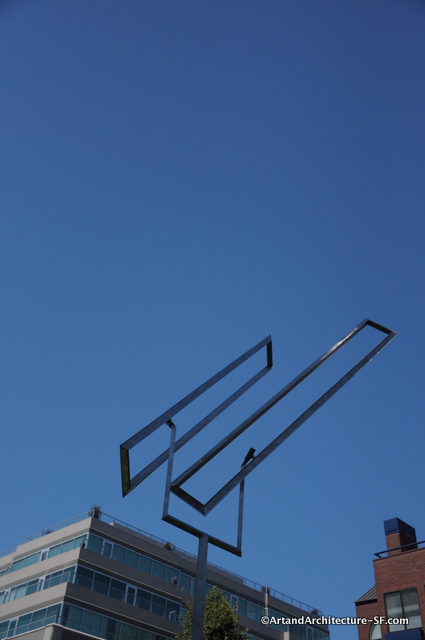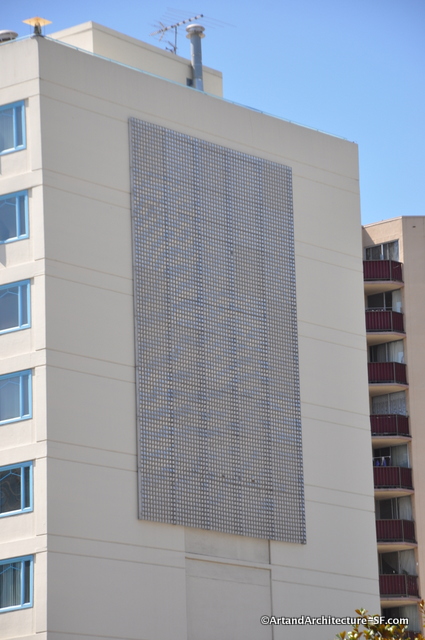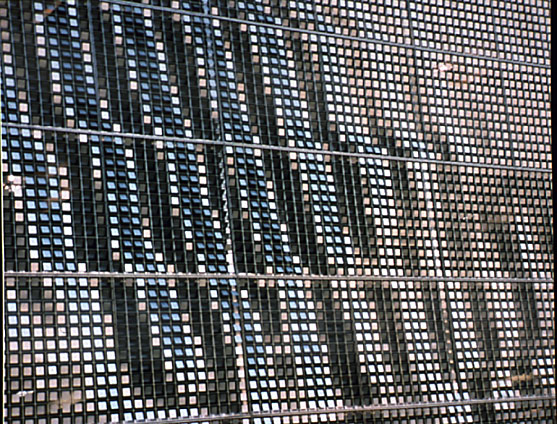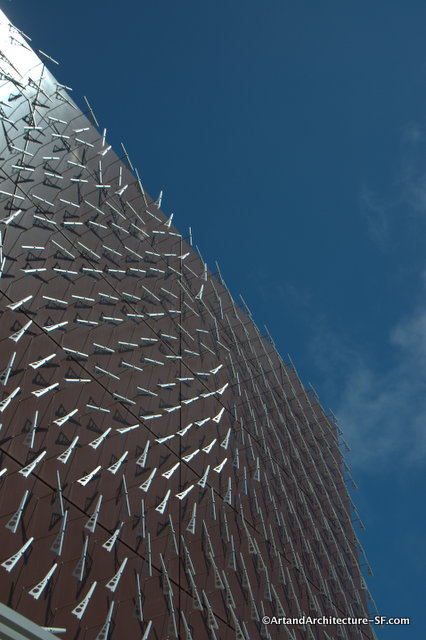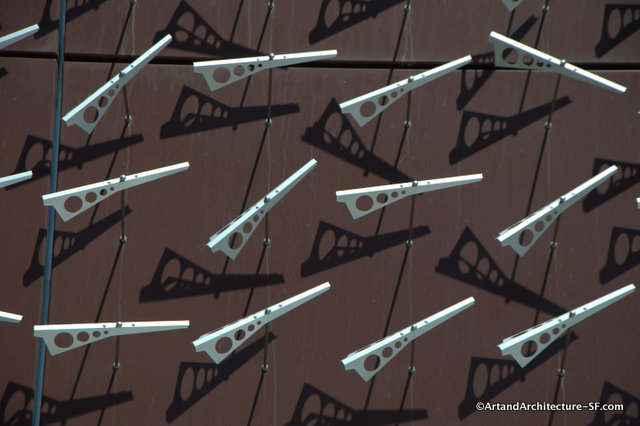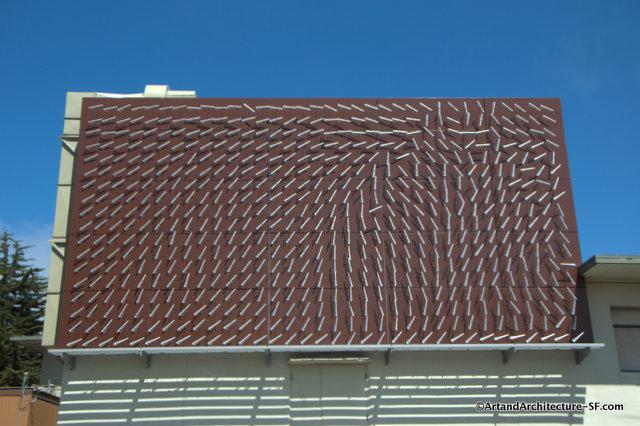Argonne Park
18th Avenue between Geary and Anza
Inner Richmond
*
Artist Joyce Hsu combines her personal memories of summer adventures with a complex skeletal structure similar to an airplane to create two unique artworks for Argonne Playground. These two sculptures, Firefly and Dragonfly each grace one of the two entrances to the park.
Hsu explains that the title, “Incomplete Metamorphosis” is a scientific term describing a particular type of life cycle of insects. Hsu has adopted the term, but not its specific meaning. She has created her own meaning, seeing in the term a way to describe her insect sculptures: “Not only are they flightless, but they stand motionless, while their skeletal design requires viewers’ vivid imagination to complete.” She has expressed the hope that “many children will be able to share the joy and amazement I found with dragonflies as a youngster.”
Joyce Hsu (who has been in this website before) received an MFA from the San Francisco Art Institute in 1998. For the last ten years, she has exhibited throughout California and increasingly internationally. Currently Hsu is working to complete a Master of Architecture degree at CCA in San Francisco, where she has also received numerous awards for her work. To date, Ms. Hsu has received five public art commissions, including an upcoming major work to be installed at the San Francisco International Airport.
Incomplete Metamorphosis was commissioned by the San Francisco Arts Commission in accord with the city’s public art ordinance, which provides for an art enrichment allocation equivalent to 2% of the construction budget of a new or renovated civic construction project. Funds for the artwork were provided by the Recreation and Park Department. The two sculptures were commissioned for $25,o00 in the 2006-2007 budget.



